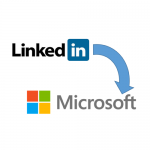Why Global Market Leadership is the Only Position Worth Having
![]()
 I recently prepared a workshop with an information technology company that wants to enter the German market in a rather mature area.
I recently prepared a workshop with an information technology company that wants to enter the German market in a rather mature area.
As I was laying out the steps we needed to cover and the preparation that the client should do prior to the workshop, the CEO suddenly became enthusiastic and said “if we can just get one percent of the German market!”
“Then what?” I asked.
“Then that’s more revenue than we are doing today,” he replied.
“Why do you say one per cent and not twenty percent?” I then asked.
He looked at me as if I just had landed from Mars and replied “Twenty percent? How is that possible?”
My answer was: “If you go for market leadership in Germany, which is most likely at least twenty percent market share, then chances are that at some stage you get to and pass one percent market share. If you go for one percent market share then chances are that you will never get there.”
The winners take all
 The information technology industry is a “winner takes all” type of game. The market leader enjoys enormous advantages over number two, three and so on. Chances are that number one will continue to increase her market share while the followers will lose out. It’s not only the good old rule that the army with the most soldiers normally wins the battle. The information technology industry is governed by some very specific dynamics that are best understood by studying the “law of diffusion of innovation.”
The information technology industry is a “winner takes all” type of game. The market leader enjoys enormous advantages over number two, three and so on. Chances are that number one will continue to increase her market share while the followers will lose out. It’s not only the good old rule that the army with the most soldiers normally wins the battle. The information technology industry is governed by some very specific dynamics that are best understood by studying the “law of diffusion of innovation.”
Because of the nature of information technology products the market prefers buying from the market leader. The first to reach the tipping point in a market gets caught by the tornado and suddenly revenue generation isn’t the primary concern anymore. Demand will drive revenue and fulfilment becomes the primary challenge.
Believing that getting one percent market share is easier and requires less investment than going for twenty percent market share is a common misconception.
Nobody jumps from zero to twenty. We have to pass one, two, three, four, five and so on. But trying to make a strategy for one percent market share only? That’s extremely difficult and having a marginal position in a foreign market is a nightmare unless it’s a milestone you pass overtaking you competitors.
Narrow your market through segmentation
![]() What you should do is segment the market and focus on getting a leading position in a subsegment first. Typically you pick a subsegment that you know extremely well and where you already have an ultra strong position in other countries. Your value proposition must be superior to those incumbents that you wish to substitute. The benefit of using your solution must justify the switching cost, void the perceived risk of engaging with a new supplier and provide a tangible and fast return of investment. Then you take the leadership position in that subsegment and move from a position of strength to a neighbouring subsegment. Some day you may own 20 percent of the full market and you will be hard to beat for new insurgents.
What you should do is segment the market and focus on getting a leading position in a subsegment first. Typically you pick a subsegment that you know extremely well and where you already have an ultra strong position in other countries. Your value proposition must be superior to those incumbents that you wish to substitute. The benefit of using your solution must justify the switching cost, void the perceived risk of engaging with a new supplier and provide a tangible and fast return of investment. Then you take the leadership position in that subsegment and move from a position of strength to a neighbouring subsegment. Some day you may own 20 percent of the full market and you will be hard to beat for new insurgents.
Going for one percent market share in a new market just because that’s more revenue than what you are making today is setting yourself up for failure.
The benefits of market leadership
The main advantages that the market leader enjoys over their lesser known competitors are:
- More profitable (the “Customer Lifetime Value/Customer Acquisition Cost” ratio >3),
- Higher volume of inbound leads
- Potential customers decide faster
- Win rates are higher
- Inbound requests from potential resellers
- Unsolicited applications from potential employees
Market leaders are tough to beat. Only when they fail to innovate or they get complacent do we have a chance to nip at their heels.








